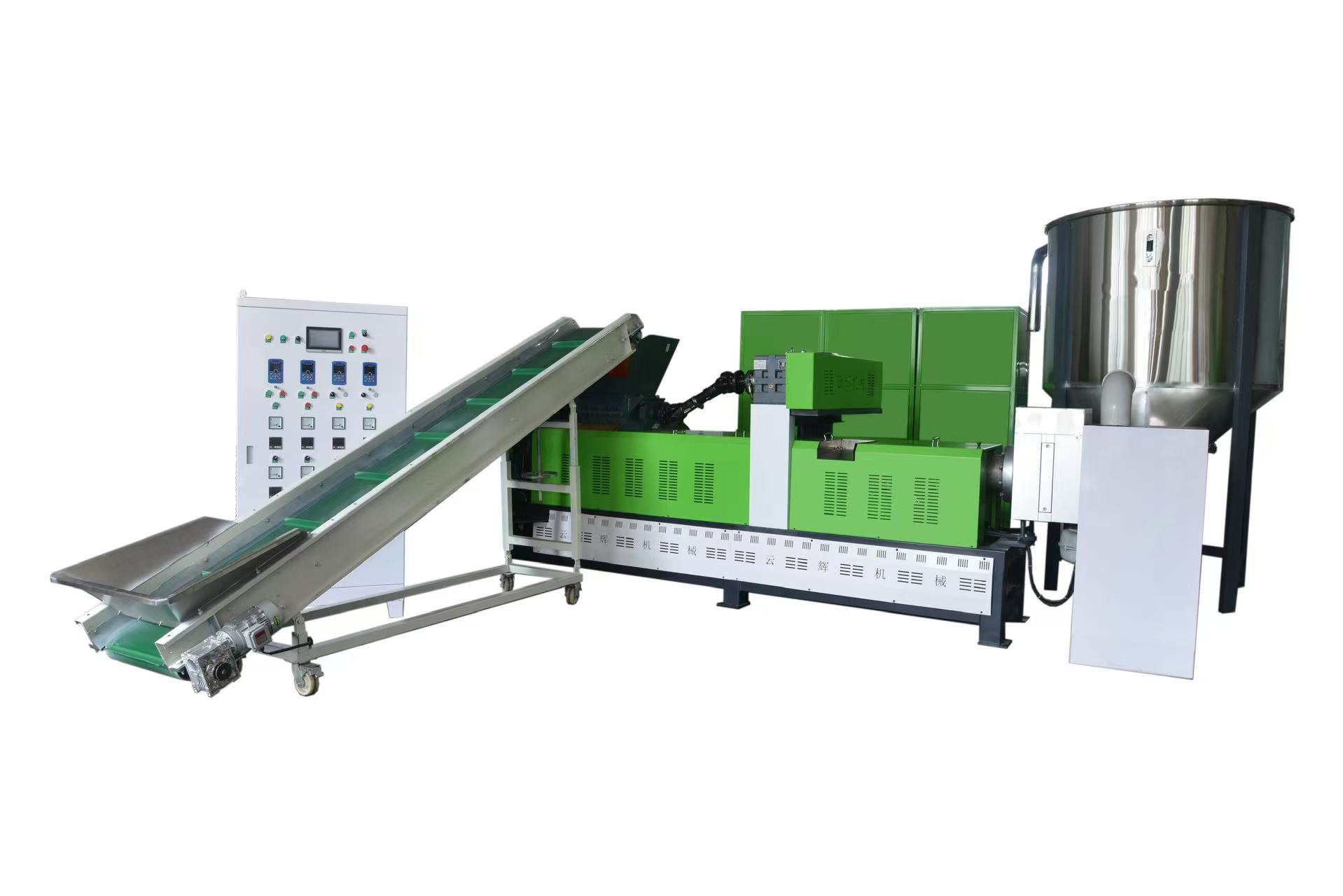好的👌 我来帮你把整篇文章翻译成英文,保持正式、清晰的语气:
Adopt plastic recycling granulators · Use environmentally friendly low-temperature recycling granulators to improve both utilization and sustainability.
In recent years, global awareness of the large-scale production of plastics and the resulting environmental crisis has grown significantly. Plastic production surged from 2.3 million tons annually in 1950 to 448 million tons in 2015, and it is still increasing rapidly. By 2030, global plastic production is expected to double, and by 2050, it could nearly triple. If humanity does not change current patterns of production and consumption, the amount of plastic in the ocean may even exceed the number of fish by then. This would not only be a disaster for ecosystems but would also pose serious risks to human health.
The problem with plastics is that most of them cannot be effectively recycled. To date, only about 9% of all plastics ever produced have been recycled; the rest are either landfilled or released into the natural environment. Over time, plastics break down into tiny fragments called microplastics. These are now found in rivers, oceans, and soils, and even enter the human body through the food chain, creating potential health hazards. Single-use plastics are at the core of this problem. Over 40% of plastic waste comes from packaging, straws, disposable cups, containers, and bags that are used only once and then discarded. Since plastics do not biodegrade, they can persist in the environment for hundreds or even thousands of years.
Moreover, plastic pollution is not only a waste management issue but also a lifecycle problem. From the extraction of fossil fuels to petrochemical production, and finally to incineration or landfilling, every stage consumes resources and releases greenhouse gases, worsening climate change. For these reasons, reducing plastic use has become an urgent global priority.

How Can We Reduce Plastic Use in Daily Life?
To effectively tackle plastic pollution, the most important step is to address the source—reducing our reliance on single-use plastics. Here are some practical changes we can make:
- Choose Reusable Containers
Replace plastic lunch boxes with glass jars, stainless steel containers, or bamboo products. They are safer, more durable, and do not release harmful chemicals over time. - Recycle Properly
If plastic use is unavoidable, ensure it is placed in the correct recycling bin. Following local recycling guidelines gives plastics a chance to be reused instead of ending up in landfills or nature. - Say No to Microplastics
Some cosmetics and personal care products contain microbeads that wash directly into waterways and pollute the oceans. Opt for products labeled microplastic-free. - Sustainable Fashion and Washing Habits
Synthetic fabrics like polyester and nylon release microfibers during washing. Reduce unnecessary purchases, choose natural fabrics such as cotton or linen, and wash clothes less frequently to minimize microplastic pollution. - Carry Your Own Bottle and Utensils
Disposable plastic bottles and cutlery are major sources of waste. A reusable water bottle reduces carbon emissions and ensures access to clean water anytime. Bringing your own utensils and straws when dining out reduces waste and avoids exposure to low-quality plastics. - Reduce Single-Use Cups and Bags
Plastic cups and bags widely used in cafes and supermarkets are harmful to the environment. Cultivate the habit of carrying a cloth tote or reusable shopping bag. Using your own coffee cup may even earn discounts at certain cafés. - Kitchen Alternatives
Ditch plastic wrap and replace it with beeswax wraps or reusable silicone lids. When needed, aluminum foil is a better alternative since it is recyclable in most cases. - Make Your Own Cleaning Products
Many cleaning solutions are packaged in plastic bottles and contain harmful chemicals. Instead, make a simple, eco-friendly cleaner at home by mixing 1 part vinegar with 3 parts water, and store it in a reusable spray bottle.
The Responsibility of Society and Individuals
Reducing plastic use is not only an individual choice but also requires collective action across all levels of society. Governments, businesses, and consumers must work together:
- Policy Action: Support plastic bans and restrictions, encourage the use of biodegradable materials, and promote circular packaging systems.
- Corporate Responsibility: Companies should reduce single-use packaging, establish reusable packaging systems, and provide sustainable alternatives.
- Public Participation: Individuals can start with their own habits, embrace green consumption, and say “no” to non-environmentally friendly products.
Plastic pollution—also known as “white pollution”—has become a global challenge. It not only damages the environment and landscapes but also threatens human health and the planet’s sustainable future. To truly address this issue, we must shift our mindset—from “convenience first” to “environment first.”
Reducing plastic use does not mean sacrificing quality of life. On the contrary, it represents a healthier and more responsible lifestyle. A reusable shopping bag, a personal water bottle, or a pair of chopsticks can all be small but meaningful contributions to the Earth. When combined, these small actions can create powerful change.
👉 Conclusion
The root cause of plastic waste lies in overdependence on single-use items. Reducing plastic use is not only essential for protecting the environment but also improves the quality of our daily lives. Starting today, let us make conscious choices in every purchase, every meal, and every cleaning routine—becoming active participants and promoters in the fight against plastic pollution.
Need plastic recycling machines or pelletizers? Contact me.







